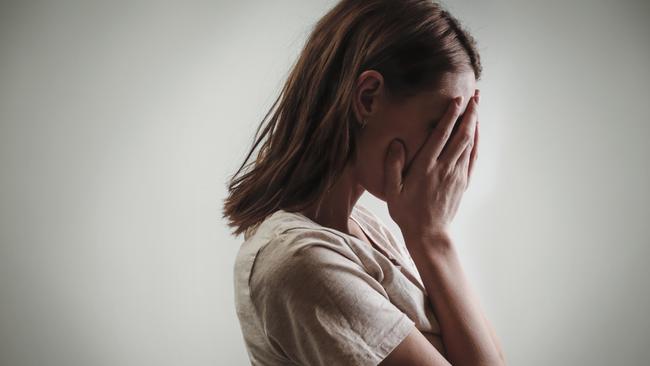Shepparton suicide rate: New data reveals Goulburn Valley mental health crisis
New data has revealed Shepparton’s shocking suicide rate, as local services report an increase in people needing help through the pandemic.

Goulburn Valley
Don't miss out on the headlines from Goulburn Valley. Followed categories will be added to My News.
Shepparton residents are struggling with mental health and suicide at higher levels than their city counterparts, new research reveals.
The findings, from analysis by the Australian Institute of Health and Welfare (AIHW), show 13.9 people per 100,000 died by suicide between 2015 and 2019 in Shepparton.
That’s 42 deaths across this period.
But the death rate is tragically higher in other regional centres, including Wangaratta, Benalla, Gippsland and Mildura.
Goulburn Valley Health adult mental health service divisional clinical director Ravi Bhat said the numbers did an injustice to the gravity of a death related to mental illness.
“It is always sobering to note that each death by suicide is a tremendous loss to all involved,” he said.
In addition, Dr Bhat said there had been an increase in the number of psychiatric presentations to the hospital in recent months through the COVID-19 pandemic.
But he said fresh funding to the HOPE program, which provides follow up care to people who go to the emergency department with severe mental illness, would help reduce the rate.
“And GV Health is actively working with Murray PHN and other partners to develop a regional response to suicide prevention and postvention programs,” he said.
Murray PHN chief executive officer Matt Jones said one such prevention project was to establish a mental health hub in Shepparton.
He said the service would open early next year and would make it easier for people to access help.
“People can call the hub on a 1800 number without referral to have their needs assessed, which will connect to the local service system,” he said.
However, Mr Jones said current services were for the most part disjointed and did not offer enough support for people with mild to moderate illness.
“There’s not enough care for people who are too unwell for their GP but are not unwell enough for hospital,” he said.
Mr Jones said regional areas still needed more “flexible” and “integrated” mental health services to cater for all individuals and to stop people from falling through the cracks.
While COVID-19 has resulted in more people needing mental health help, he said regional Victorians were at a natural disadvantage to city dwellers.
“Regional areas have more chronic disease, more mental health issues, as well as from a socio-economic point of view, lower levels of literacy and physical activity and nutrition, and higher rates of substance abuse,” he said.
Nationally, natural disasters, a lack of mental health services and job opportunities have made rural and regional areas hot spots for suicide.
The AIHW figures show all but one of the 20 deadliest postcodes for suicide are in rural Queensland, Western Australian, the Northern Territory and Tasmania.
January and February are the deadliest months for suicides, according to the AIHW, with the most common contributing factors to suicide including a history of self-harm, disruption of family by separation and divorce, relationship problems, the disappearance and death of a family member and legal problems.
Between 2017 and 2019 the contributing factors which saw significant increases included relationship problems, social exclusion and rejection and a family history of mental illness.
Sydney University’s Brain and Mind Centre policy co-director Professor Ian Hickie said employment, education and opportunities are also big factors.
“In rural and regional areas unemployment rates are higher, there are more poor people and opportunities are less for employment and participation,” Prof Hickie said.
“There are also economies which are subject to more rapid changes in fortune whether that be natural events – such as floods and other natural disasters – or through the opening and closing of key industries.
“Young people, Indigenous people, people with very limited education and skills are over represented – all of which create a background higher intrinsic suicide rates in those communities.”
Suicide Prevention Australia chief executive Nieves Murray said the causes of suicide were complex.
“There are various factors that may contribute to suicide and they aren’t always linked to mental ill-health,” she said.
She also said that psychosocial risk factors – how social factors like housing impact on an individual – are associated causes of death for 90 per cent of suicides.
If you or someone you know needs help:
See a doctor, organise a mental health plan for visits to specialists.
Access Beyond Blue online or call 1300 22 46 36 anytime.
Lifeline on 13 11 14; Headspace; Kids Helpline 1800 55 1800; supportaftersuicide.org.au
If you are concerned take them to a hospital emergency department.
If you fear they will hurt themselves call police triple-0 immediately.


